Inside The Lord of the Rings: The Rings of Power, the most expensive show ever made
The team behind the small-screen epic take Total Film on a journey into the outer reaches of Middle-earth, featuring new faces, terrifying Orcs, and Galadriel as you’ve never seen her before. And this is only the beginning...
This Lord of the Rings: The Rings of Power article first appeared in the August 2022 issue of Total Film magazine. You can purchase a hard copy here
In a hole in the ground there lived a hobbit – and a few thousand years before that, there lived a harfoot. While these peoples of diminutive stature may have the same hairy feet and knack for going on unexpected journeys as their more famous descendants, the Harfoots occupy a very different Middle-earth. Morgoth, the great enemy, has just been defeated and his chief lieutenant, Sauron, gone into hiding. Gil-galad rules the prosperous Elven realm of Lindon, and the Dúnedain, long-living men, keep to themselves on the isle of Númenor. The Dwarves eat well in the lavish, doomed halls of Khazad-dûm, and somewhere in the distance, a nameless shadow is stirring. This is the Second Age of Middle-earth, and the setting of The Lord Of The Rings: The Rings Of Power, perhaps the most ambitious TV show ever made.
In the years since Peter Jackson’s two trilogies, The Lord Of The Rings and The Hobbit, Hollywood has explored how to continue Tolkien’s work on screen – no surprise considering the wild successes of imitators such as Game Of Thrones and The Witcher. A whole host of suitors met with the author’s estate, trying to purchase the precious rights to one of mankind’s densest stories. Only one prevailed: Jeff Bezos, who put forward enough gold to make a dragon blush (a reported $250m for the rights, another $462m for production costs of the first season alone). The deal was done, and then came the question of finding someone – or someones – foolish enough to take on the challenge of writing something on such a large scale.
“When we first went up for the job, we were told there were literally dozens of other people throwing their hat into the ring,” showrunner J.D. Payne tells Total Film. “Amazon bought the rights to the trilogy, the appendices, and The Hobbit. They said the field was wide open: ‘Any story within that material, you can go and tell.’ You had people pitching the Young Aragon show, or the Gimli spin-off.”
But Amazon wanted something more ambitious; something that felt worthy of Tolkien. Payne went to the drawing board – and he was not alone. Helping shoulder this burden was frequent writing partner (and friend since high school) Patrick McKay, the pair having previously worked together on various unproduced scripts for J.J. Abrams’ company Bad Robot, including Star Trek 4. Together, the showrunners started exploring what an onscreen return to Middle-earth could look like. “We looked at the whole Tolkien mythology, and there was this story,” McKay says. “I remember sitting around our then assistant’s apartment, and we said, ‘Well, here’s what the Dwarves are doing, and here’s what the Elves are doing, and here’s what the Númenorians are doing.’”
They envisioned a sprawling series told across multiple seasons, each one bigger than the last. “That arc of the major Second Age events felt like such an amazing, untold story,” Payne says. They went to Amazon and pitched the idea, and the duo – previously with one public IMDb credit between them – were hired to bring Tolkien’s epic back to the screen. And so began their long adventure, the story of which has only just begun.
Legends & Myths
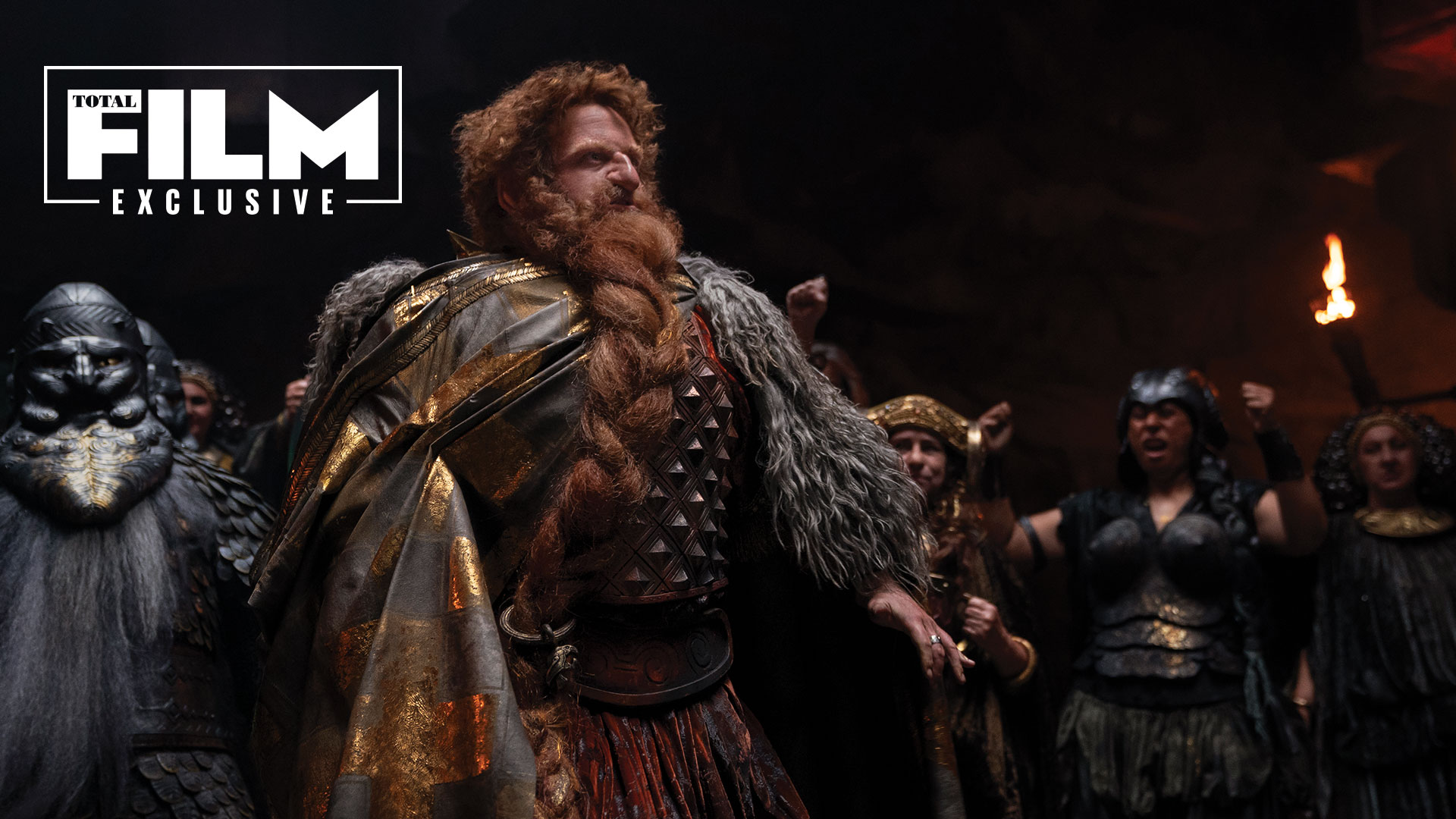
Tolkien never truly went into the specifics of what happened during the Second Age, which starts following the demon Morgoth’s defeat and concludes 3,441 years later with Isildur cutting the One Ring from Sauron’s hand, previously portrayed in the prologue to Jackson’s adaptation of The Fellowship Of The Ring. Tolkien predominantly painted the era with broad strokes; one sentence from the appendixes, for instance, simply reads: “So fell the glory of Númenor.” How did this mythical kingdom of man, never before seen on screen, fall into ruin? Book readers who have dived into Tolkien’s compendiums have some understanding. For the show’s writers, though, there was ample room for their imaginations to run wild. “Tolkien left this trail of breadcrumbs,” as McKay puts it. “We see our skills, working with so many amazingly talented artists, to bring that into fruition and excavate the fossil that he left us.”
Bringing all the latest movie news, features, and reviews to your inbox
The decision was made for there to be numerous stories all interweaving, with over 20 leading characters filling out the ensemble. Men and Elves and Dwarves and Harfoots are all present. “There are so many worlds that could have been shows of their own, but we wanted to do something that played all the notes on a piano,” says McKay. “There are other fantasy shows that will do one thing really well, where it’s this political thing, or it does great magic. In Tolkien, one moment you’re hand on heart with Hobbits, and they’re being silly and fun and charming. And in the next, it’s a deep political drama with intense discussion about the fates of kingdoms.”
Some of the characters in The Rings Of Power will be familiar: thanks to the everlasting nature of Elves, younger versions of Galadriel and Elrond – previously portrayed by Cate Blanchett and Hugo Weaving – are in the series. Isildur also plays a key role, while the villainous Sauron’s presence is keenly felt. “We can say that when he appears, it might be in a way people aren’t expecting,” teases Payne, keeping his secrets close. In other words, don’t expect the same imposing Dark Lord seen in Jackson’s two trilogies.
Ah, we should probably talk about those movies. Their spectre looms over the series: Howard Shore, who composed the cinematic scores, has written the show’s theme. Weta Workshop, the special-effects and props company, returns behind the scenes. There are even some of the same actors under heavy prosthetics as Orcs. But don’t go into this looking for more of the same.
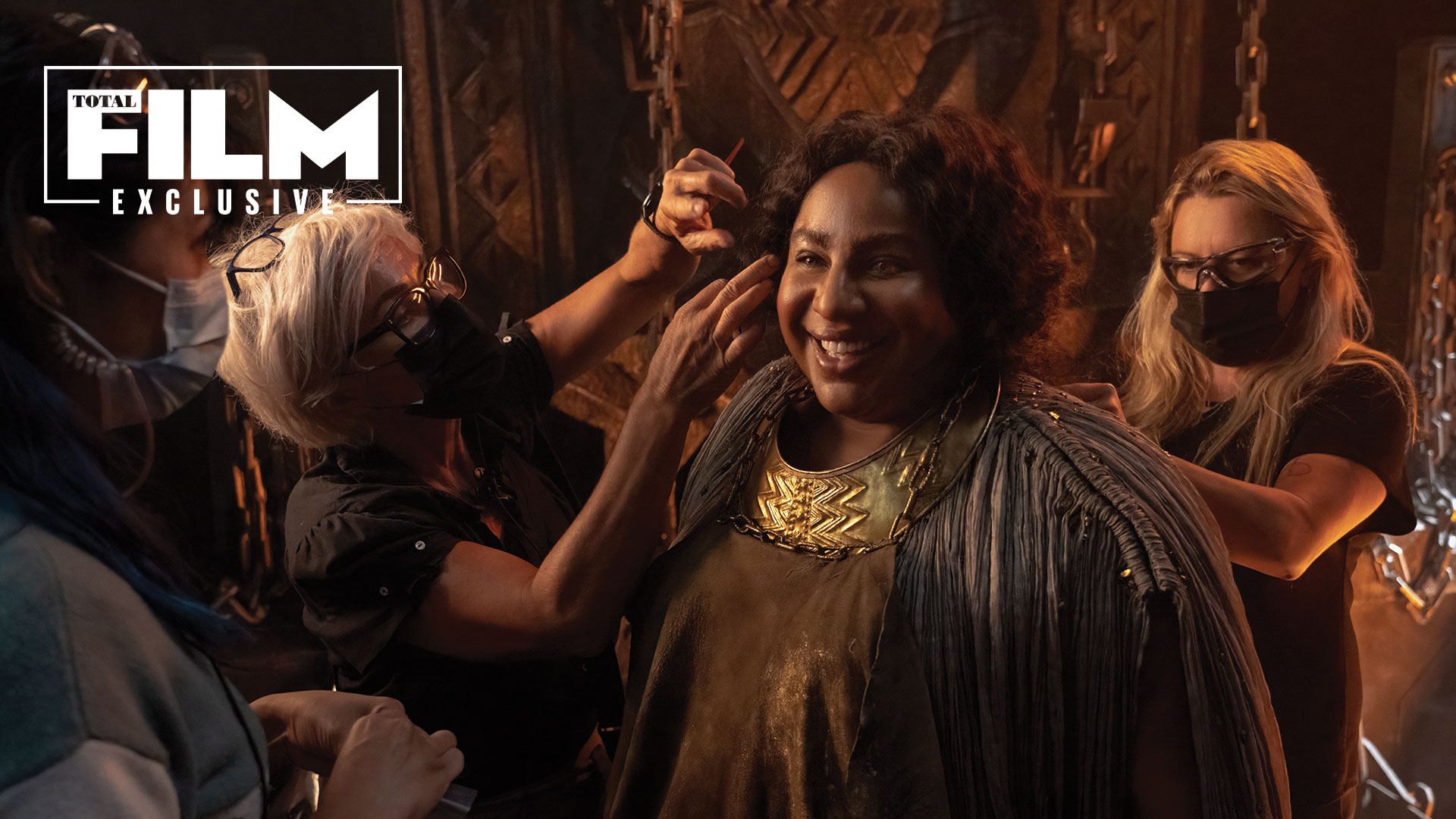
“We weren’t interested in doing a retread or a prequel,” says Payne. “We were never thinking: ‘Come watch our show because we’ll give you a whole lot more of that.’ We wanted to tell a story that would stand on its own two feet. We’re enormously grateful for the world that Peter [created]. We had a useful conversation where we said, ‘OK, there are these designs. What did Peter’s Elves look like? What did Peter’s Orcs look like?’ There were things we liked, things we didn’t like, things we wanted to build off of, or go in a big direction from. It was always a discussion.”
J.A. Bayona, who last directed the blockbuster Jurassic World: Fallen Kingdom, and who helms the opening two episodes of The Rings Of Power, says that, in his first meetings with the showrunners, they expressed their love for the Jackson movies. “The bar was set up so high – that was the level we wanted to match,” he says. However, as pre-production continued, the trio began truly separating themselves from what came before. Rather than recapture the same magic, they looked to embody the spirit of Tolkien’s work, and that eventually affected their casting choices. Everyone who joined the series had to match one criteria: they “had to have Middle-earth in them”, says Payne.
“It’s a little ineffable, but that’s what united us all,” Payne says. “All the storylines aspire to have that. If it feels like Middle-earth – like Tolkien – it earns its place in the show.”
Middle-earth may be an ineffable quality, but being a Tolkien fan probably helps, and both Morfydd Clark and Robert Aramayo, the new faces behind Galadriel and Elrond, know their Gollum from their Gandalf. When TF meets the pair – Clark in person, Aramaya over Zoom, both glowing ethereal presences – they discuss being enthralled by Jackson’s movies. Being cast in the series meant a lot to both of them, especially Clark. In fact, you can go online and watch the exact moment she truly realised she had landed the role.
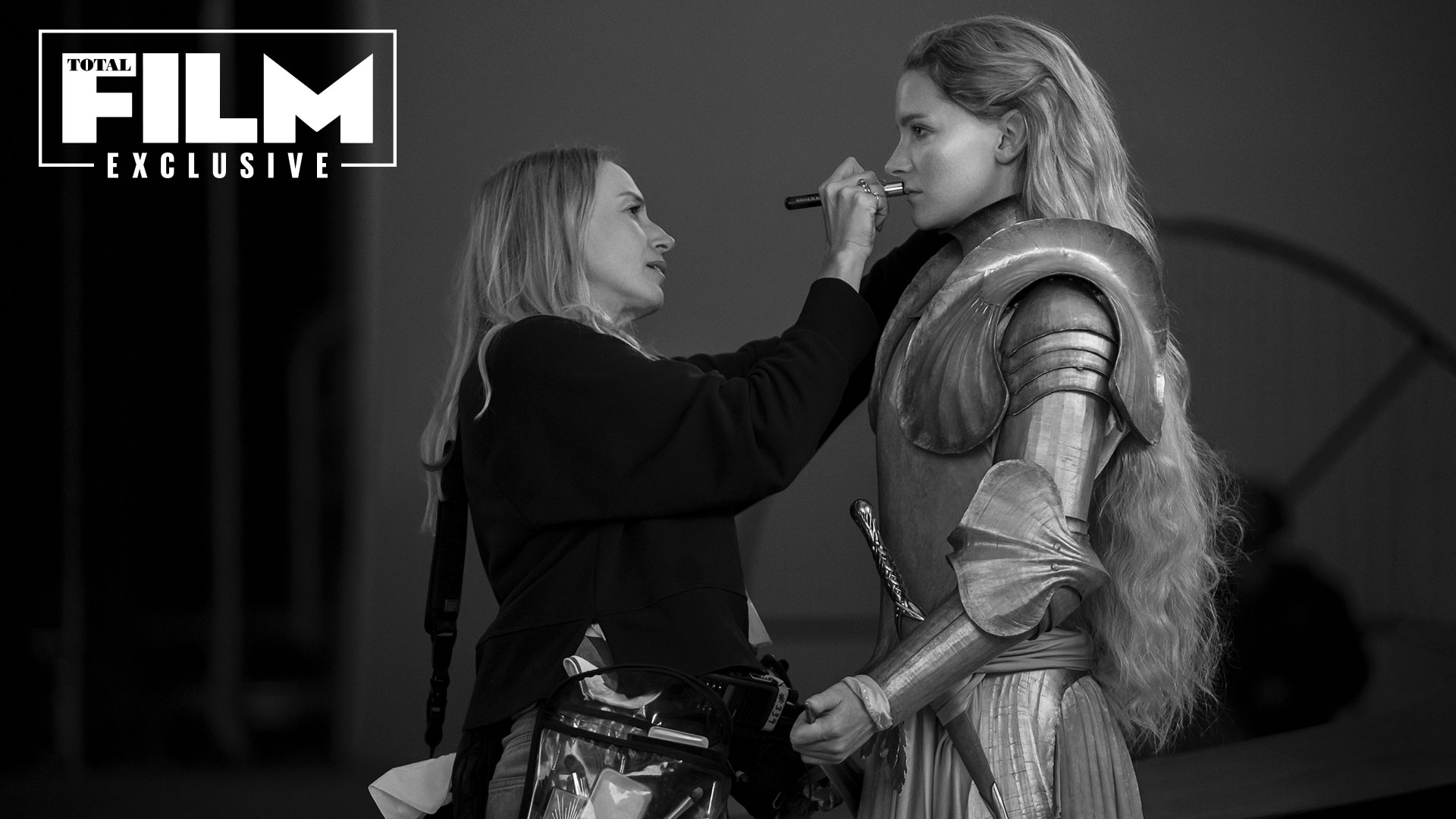
Search for videos from the Toronto premiere of Armando Iannucci’s The Personal History Of David Copperfield. You should find an on-stage, post-screening Q&A with the entire cast. It’s about 20 minutes long, but halfway through, Clark mysteriously steps off-stage. Just before the premiere, she had gotten the call. “And then I just passed out in the Q&A,” she says with a laugh, now able to reflect more fondly on the moment. “That’s how I dealt with it!” What’s perhaps more surprising is that Clark hadn’t even been told which character she would be playing. “Morfydd moved to New Zealand without knowing what role she was playing,” says executive producer Lindsey Weber. “We broke the news to her there. It was an incredible moment.”
Aramayo’s response to discovering he was in Lord Of The Rings was much calmer. “I got in the bath,” he says, Yorkshire accent showing. Meanwhile, Sophia Nomvete, who plays the Dwarven princess Disa, was in a precarious position when her agent rang. “My baby was three days old,” she says, sitting comfortably on a sofa alongside fellow theatre actor Owain Arthur, who portrays her onscreen husband, Durin IV. “My daughter was born with a C-section, so I was immobile. But she was feeding at the time and I just remember laying in bed, saying to my husband ‘Take the baby! Take the baby! The job’s coming!’” She says, with a laught that fills the room. “Then they told me: ‘You’re playing the first female Dwarf ever to have been seen! By the way, you’ve never really done telly before, either, so this should be fun.’”
Once the fellowship of predominantly UK-based actors was assembled – McKay describes the casting process as finding “22 needles in 22 haystacks” – they headed to New Zealand, where filming was soon delayed due to the Covid pandemic. Clark and Aramayo reminisce about rehearsing together in offices, wearing tracksuits and masks. The whole situation felt surreal – like something was missing. And then they went to set.
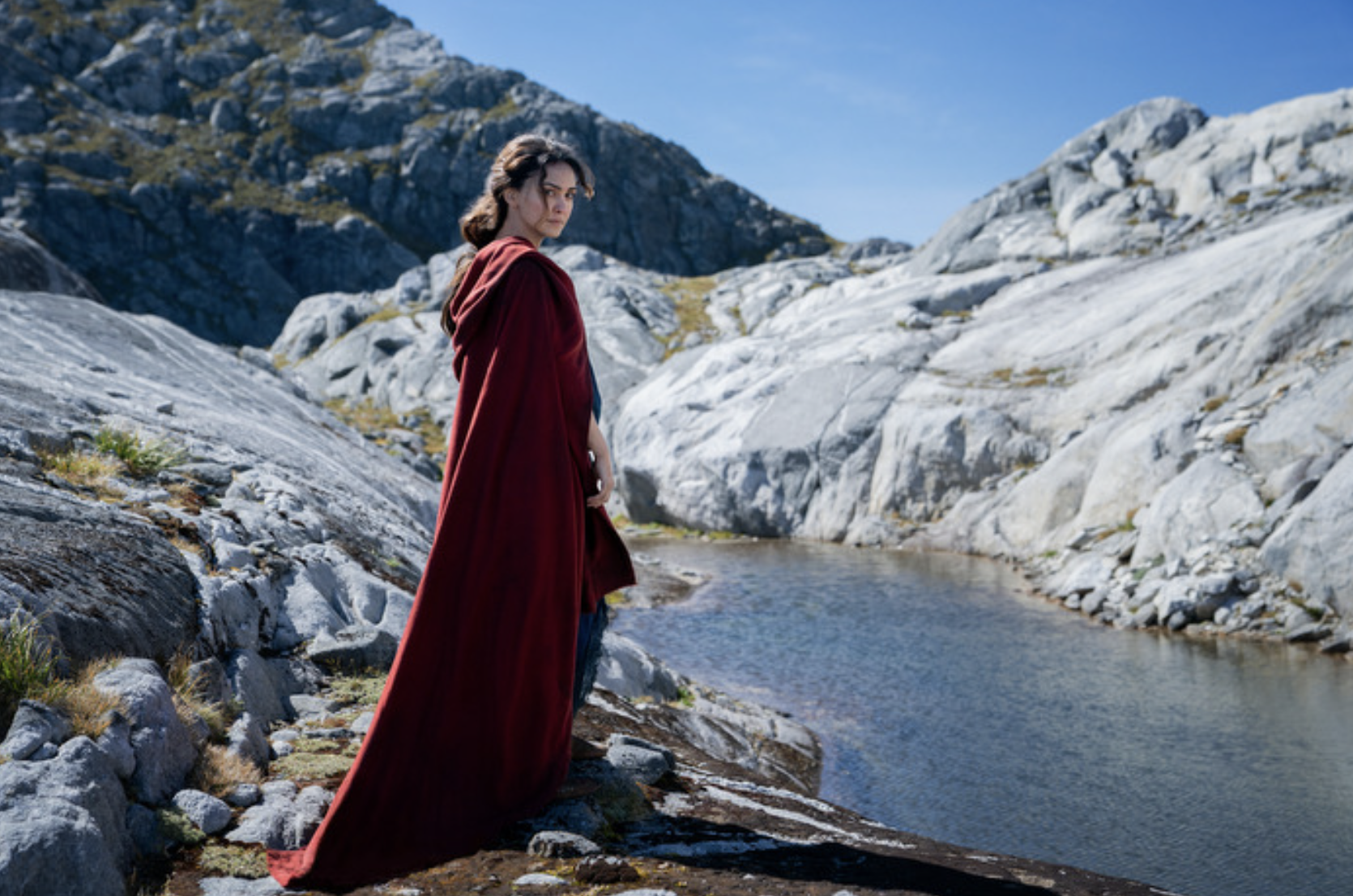
“Stepping on set in costume for the first time, I just couldn’t fathom what they would have created,” Clark says. “I find it quite challenging rehearsing in a little office and pretending to be thousands of years old. You need that drama. I thought I was prepared. I thought I knew what I was going to see. And every time I was shown something new, it just blew my mind.” Arthur shares a similar sentiment. “I was just blown away every time,” he says excitedly. “To see Khazad-dûm, you just go, ‘Oh my God, this is incredible.’ It felt like there was magic dust sprinkled there.”
Despite the size of the sets, there’s one refrain everyone repeats: that this collective of artists felt like they were creating something just for themselves. “We were playing a very expensive make-believe game when we were in New Zealand,” says Clark. Aramayo adds that they had the gift of time – two years preparing their characters. And even when the cameras were rolling, there was still the atmosphere of an independent movie project. Yes, really. Just ask Benjamin Walker, who plays Gil-galad, and who previously portrayed the titular president in the (definitely real) Hollywood production Abraham Lincoln: Vampire Hunter.
“You have this army of technicians and artists and craftsmen – from the detail on your buttons to the hand-painted leaves,” he says. “There is a scale to it. But on the day, it feels like this weird, little band of gypsy artists, shooting a guerrilla independent film, because you’re all trying to milk every bit of magic out of every scene. It’s much more collaborative than I had anticipated. A lot of times on movies, they say there are no bad questions, but they just want you to shut up. That’s not this. J.D. and Patrick are aware that we’re creating a world, and that every bit of it matters. And because we have so much time and that luxury, we’re not going to waste it. Every second’s going to be full. Like every page of Tolkien.”
Darkling Doors
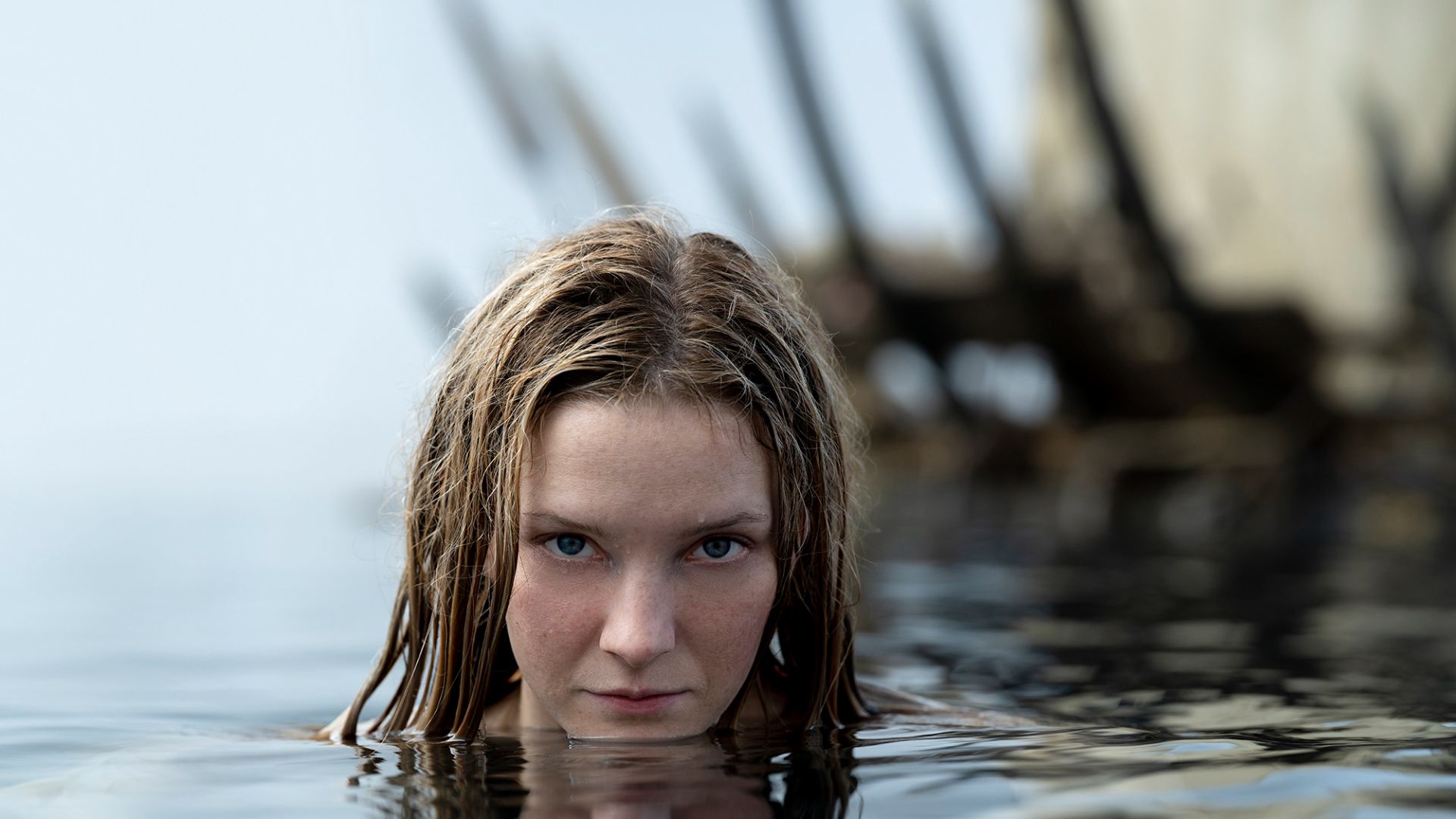
While finding the right acting troupe may have been its own challenge, there was something more pressing to address. Bayona says finding the show’s tone was the trickiest part of the whole process, especially as each race occupies a very different space: the Elves are political, the Harfoots joyously fun, and the humans tainted by romantic melodrama. “All the storylines were coming from the repercussions of the war against Morgoth,” he says of what unites these disparate stories. “And every single character, every single race, they face it in a very different way."
During the Second Age, Middle- earth was at relative peace. “Even at times of peace in Tolkien, you have a brooding sense of whispers over that mountain range,” says Payne. “There’s always something bubbling just underneath the surface.” Bayona spotlights Galadriel, who “has this instinct that evil is not finished yet” but finds that everyone around her is in denial. Aramayo describes Elrond as having “a complicated relationship" to peace, while Walker says Gil-galad’s story looks at what it truly means to be an immortal Elf: “We really embrace the sensation of everyone you know and loving having passed. It’s about having your heart broken over and over and over again, through thousands of years. How do you still muster the ability to find hope in the endless cycle of good versus evil?”
These are weighty themes – and the depth to which they are explored differentiates the series from every other Tolkien adaptation. Thanks to the nature of television, there’s more time for characters to simply talk to each other. Bayona points to a scene in the second episode in which Galadriel and Elrond have a seven-minute conversation. “Normally, when you think about these huge blockbusters, these huge productions, it’s more about the set-pieces,” the director says. “But doing that scene, I knew it was not about the set-pieces. That was what the show is about.”
That doesn’t mean The Rings Of Power lacks epic battles. “All the things you love, there will be some version of that in the show,” Payne says. “But also, there will be things you’ve never seen of Middle-earth before.
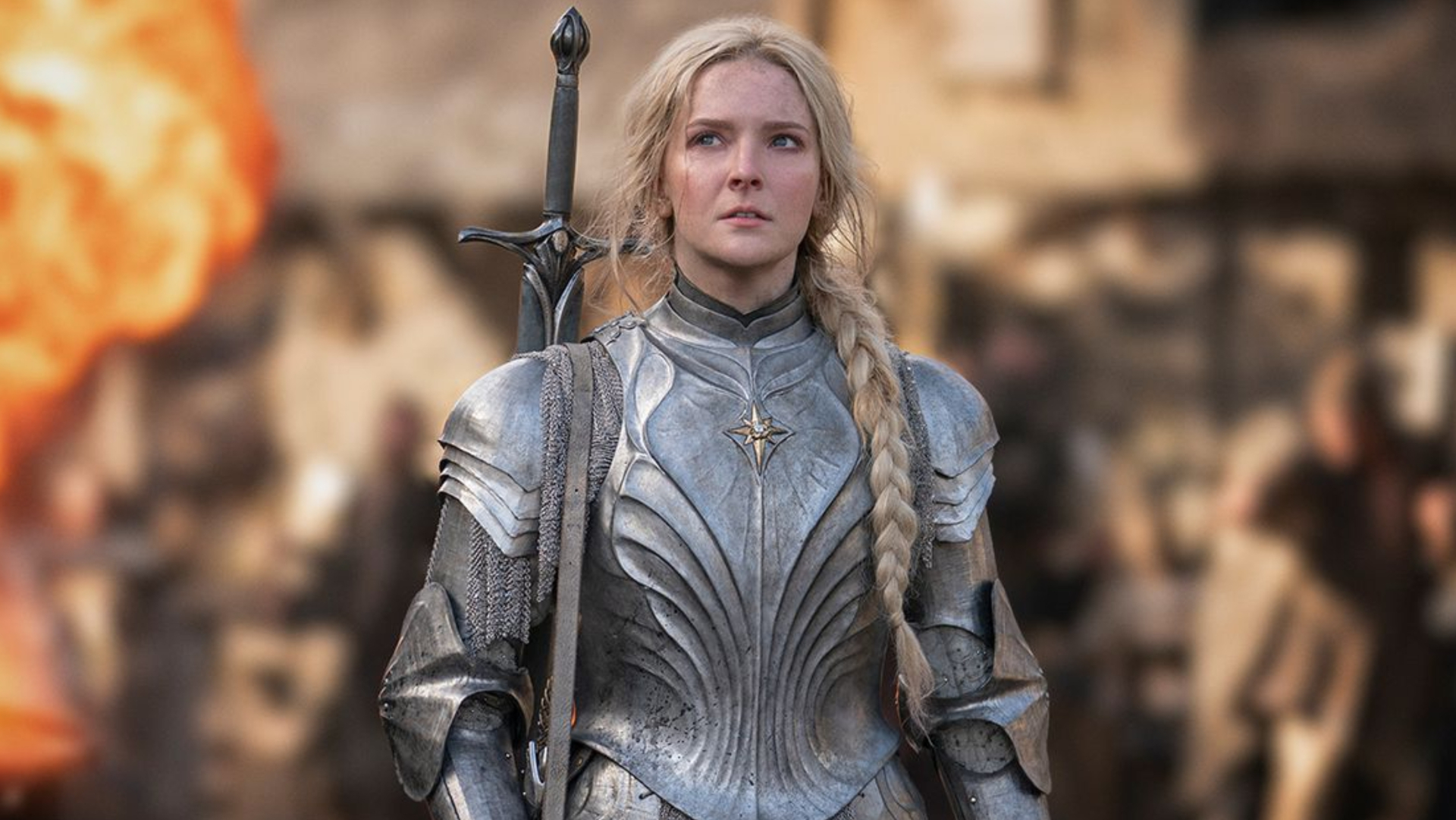
“We talk about the Dwarves a lot,” he continues. “Dwarves have often been the punchline or comic relief. But we feel that the Dwarves in Tolkien have a rich spirituality and culture and history. We really wanted to take Dwarves seriously. But will our Dwarves have moments that make you laugh? Yes, definitely. Will there still be creatures and monsters and fighting and battles and armies? All those things.” McKay promises that, from the very first episode, the series hits the ground running. “It absolutely has twists and turns and action and intensity and things that are going to be scary and things that are going to be surprising,” he says.
To demonstrate the sheer scale of the project, Payne says there are over 9,500 VFX shots in the first season alone (TF asks whether Amazon gave them a blank cheque to which exec producer Weber says there were “limitations” put in place). And each season – there are five commissioned – will try to outdo the last.
“We feel that it’s important that we get into a game of trying to top ourselves, and do something more outrageous and crazy than we’ve done, or someone else has done,” McKay says. “Sometimes the answer is to go underneath, to go deeper into character, and deeper into the emotional intensity of a moment. We want to make Orcs scary again. Let’s get away from the potential feeling of mass armies of thousands of Orcs. One orc can be terrifying. Sometimes ‘small’ can be bigger, and feel bigger, and have an intensity that’s even more powerful. Escalation is really important, and we want to blow people’s minds visually in terms of the set-pieces and action, but we’re not about spectacle for spectacle’s sake.”
They’re also not about bringing in superfluous characters from Tolkien mythology just for the sake of a cameo. “It’s pretty important to us that there’s some real precedent in the lore and the themes that obsessed Tolkien,” says McKay. Weber adds that they’re “open to anything with these characters,” even the return of Ian McKellen as Gandalf. The actor, who portrayed the wizard in Jackson’s movies, previously expressed a desire to return to Middle-earth, joking that “it’s the one part you can’t be too old for”. Asked whether McKellen could reprise the role in the show, Weber says: “Who would say no to Ian McKellen? Nobody on the planet would say no to Ian McKellen.” When TF presses McKay on Gandalf showing up, though, he once more points to Tolkien’s work being the guiding principle. “That’s a non-answer, but that’s what I’m giving you,” he adds.
Indeed, the secrecy around The Rings Of Power is surprising considering the series is based on decades-old source material. Weber says the production worked on a comparative level to how Lucasfilm and Marvel keep their projects from leaking. The sets were paperless and costumes were covered up so long-lens photographers couldn’t snap and share spoilers.
TF has some first-hand experience of how these secrets were kept safe. On a sunny Saturday morning, TF heads to North London’s AIR Studios, founded by Beatles producer George Martin, to attend a recording session for the series. While Howard Shore created the theme, Bear McCreary composes the series’ score and today, he’s orchestrating a sweeping string section. The tracks range from mournful to uplifting – there’s that ineffable yet palpable quality of Middle-earth to them. After the recording, McCreary speaks passionately about writing themes for characters that evolve over five seasons. And yet, despite having worked on the series for months, McCreary’s involvement has not been publicly confirmed. In fact, during our time on the premises, TF’s had any potential recording devices locked away and everyone refers to the show as the "Amazon project", as if the show’s title were in some cursed Orcish tongue.
Cave Trolls
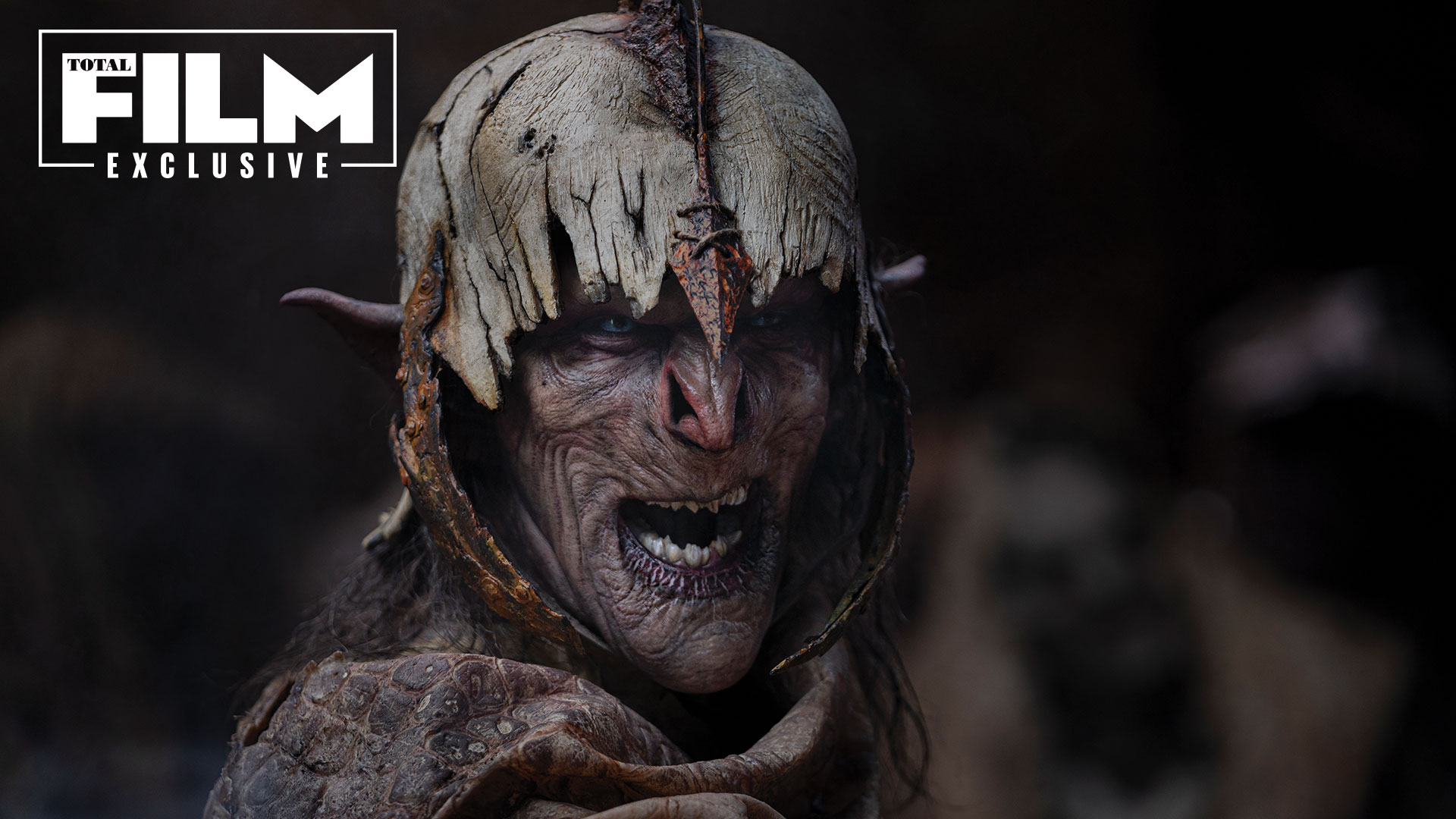
As a result, there’s frankly an almost unprecedented lack of leaks from the series – and there’s so much to keep secret. The showrunners will introduce several new characters never mentioned in Tolkien’s work (but who have that Tolkien feel). That includes Ismael Cruz Córdova’s Arondir, an elf with a forbidden human love-interest (reminiscent of the story of Aragorn and Arwen); Lenny Henry’s harfoot elder Sadoc Burrows; and Joseph Mawle as the mysterious Oren (the hair and make- up team tell TF that his look was the hardest to get right – make of that what you will).
For the first time, people of all creeds and colours will inhabit Middle-earth. Nomvete’s Disa, for instance, is the first non-white Dwarf to ever appear on screen. “This is a miracle for someone like me,” she says. “It’s something that I never dreamed could happen because of the history of television and film. And it is desperately important for our industry, for our time, for the world to be able to see versions of themselves on screen; to be able to celebrate and redress the balance of what we see on television and particularly productions of this magnitude. This is casting the best people for the roles, but it is accepting that those people can, and should, look like I do. It’s an honour to be able to stand and be a poster child of that.”
With such a diverse cast in a typically white space, there have been accusations of political correctness. From the bowels of Mordor, they complain, without any real proof, that the series is trying to introduce modern-day talking points and does not reflect Tolkien’s text – something the showrunners dismiss as hearsay.
“Tolkien wrote about it at length,” McKay says. “This was one of his debate points with C.S. Lewis, his friend and colleague. It was very important that what he was creating was not an allegory. He was not commenting on historical events of his time or another time. He was not trying to transmit a message that spoke to contemporary politics. He wanted to create a mythos that was timeless, and would be applicable – that was his word, ‘applicable’ – the applicability across times.
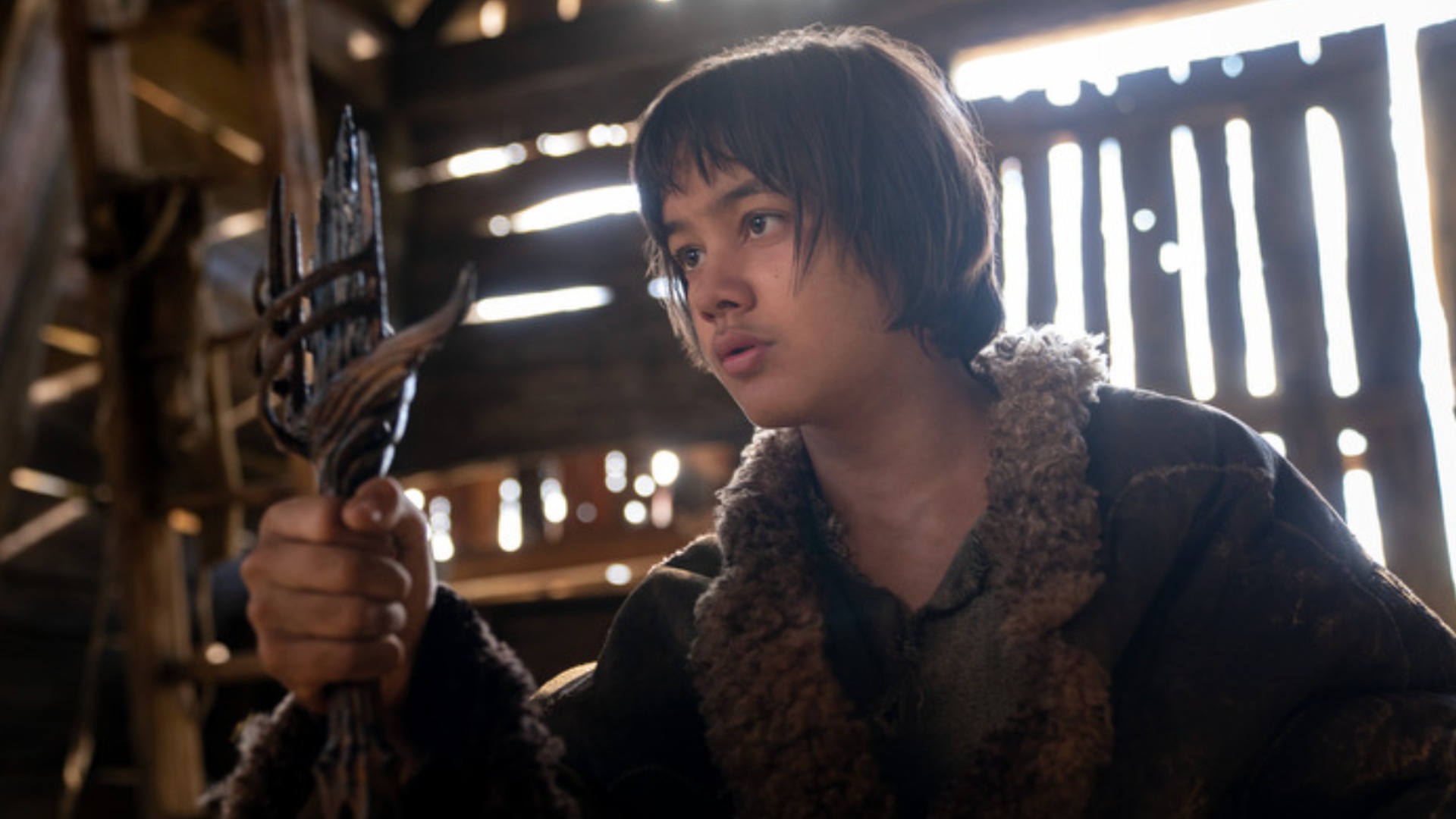
"Every single choice we’ve made at every turn of making this show has been to be faithful to that aspiration, because that’s what we want as viewers. We don’t want to adapt the material in a way that might feel dated. We aspire to being timeless. That’s why these books still speak to people so much, because so much of what’s in them has not aged a day. And we aspire to do the same thing. And I think we feel that once people see the show, and see what the stories and characters and worlds are in context, they’ll feel the same way.”
Another talking point, this one among common folk, has been about the expedited timeline the series is set across. Rather than have the Second Age run for thousands of years, the showrunners – working with the Tolkien estate – condensed the story, otherwise humans would be dying between episodes (due to their short lifespans) and only Elven characters would be in every season. A non-linear series was considered, but that, McKay explains, would have stopped the audience from emotionally investing in the series. Payne points out how plenty of real-life historical dramas do the same thing and says their guiding principle was respect for the “spirit and feeling” of the Second Age.
McKay and Payne will certainly have enough space to explore a multitude of engaging stories across their series: Amazon bought the rights to one long 50-hour story, and McKay and Payne approached the story as such. Things that happen in the first season, consisting of eight hour-long episodes, may not pay off until the final season.
“This is one of the most massive canvases that any storyteller has ever really had,” Payne says. He points to Isildur, a character whose fate is known by even casual fans, and how they wanted to analyse how the warrior became the man who defeats Sauron yet refuses to cast the One Ring into the fires of Mount Doom. “That’s one of 50 examples I could pull out of places or people or cultures or events that will eventually pay off in this massive way, in the 40th hour through 50th, in hours zero through eight. And now from nine through to 16 – we’re starting Season 2, and we’re saying, ‘How are we going to plant those seeds so that we can reap the harvest years down the road?’”
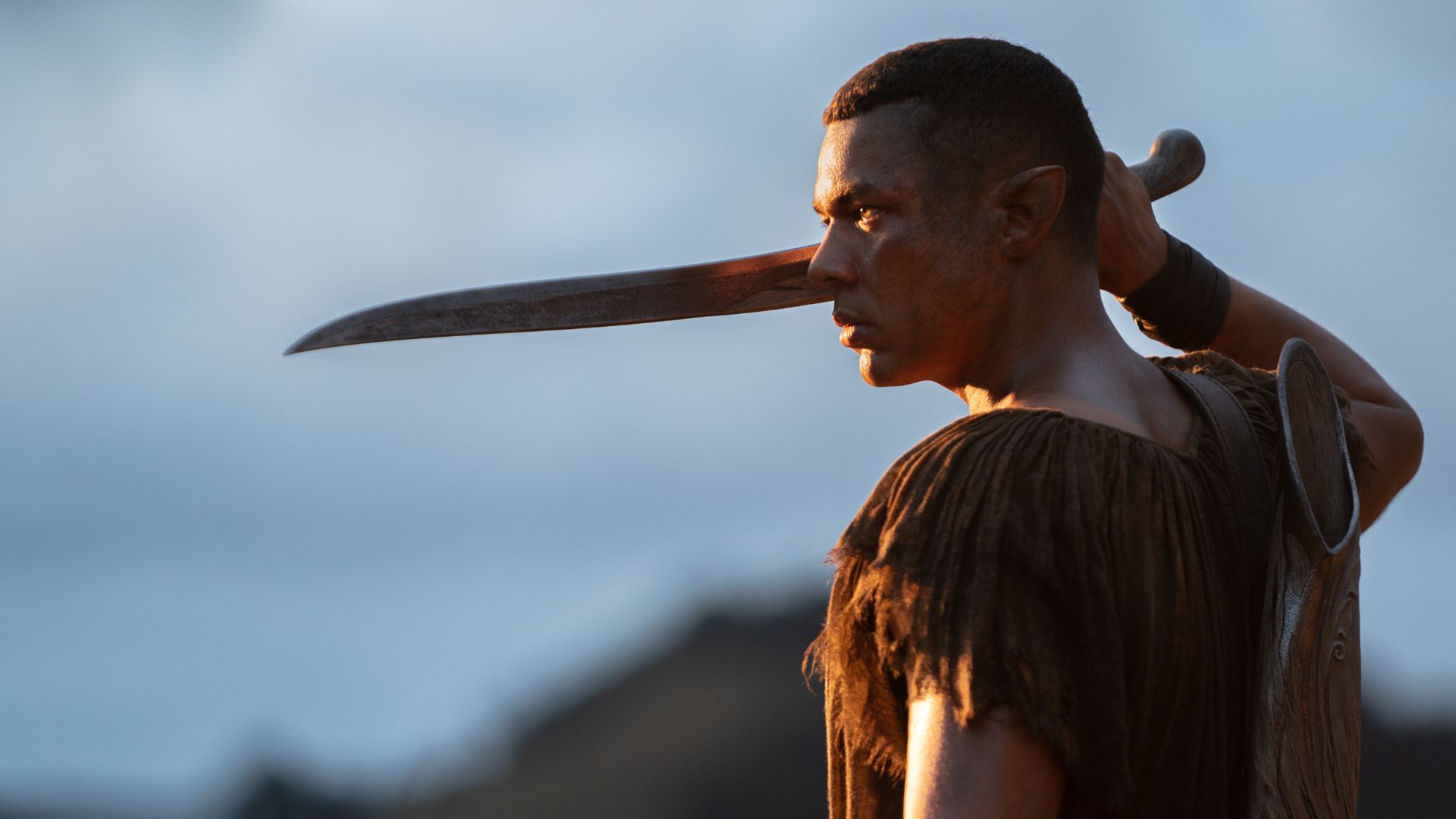
Production has moved from New Zealand to the UK for the second season, with sets being shipped halfway around the world. And while it appears these 50 hours of television are set in stone, McKay says there’s still room for manoeuvring. He likens the situation to a road trip, where you aim for one destination but perhaps you see something on the horizon and you go and visit that place, and then perhaps you stop there a little longer than anticipated, like how Frodo and Sam, when they reached the Black Gates of Mordor, changed course and went via Shelob’s Lair, but still reached the same destination.
“You always want to take advantage of opportunities,” McKay says. “We don’t approach the work as trying to fit a plan or a colour scheme. We approach the work as: you’re always marching in the same direction, but along the way, you leave room for discovery and surprise. We’re always looking for discoveries, but we have real tentpoles and big concepts and ideas and moments that will probably float to the top no matter what’s going on in the waves.”
It seems McKay and Payne and their cast have a long, expected journey ahead of them, and as each cast member reveals their hunger to return to Middle- earth, TF’s reminded of something a Hobbit who lived in a hole once said: “I think I’m quite ready for another adventure.” The Lord Of The Rings is back, different, and more ambitious than ever.
A Q&A with Owain Arthur and Sophia Nomvete
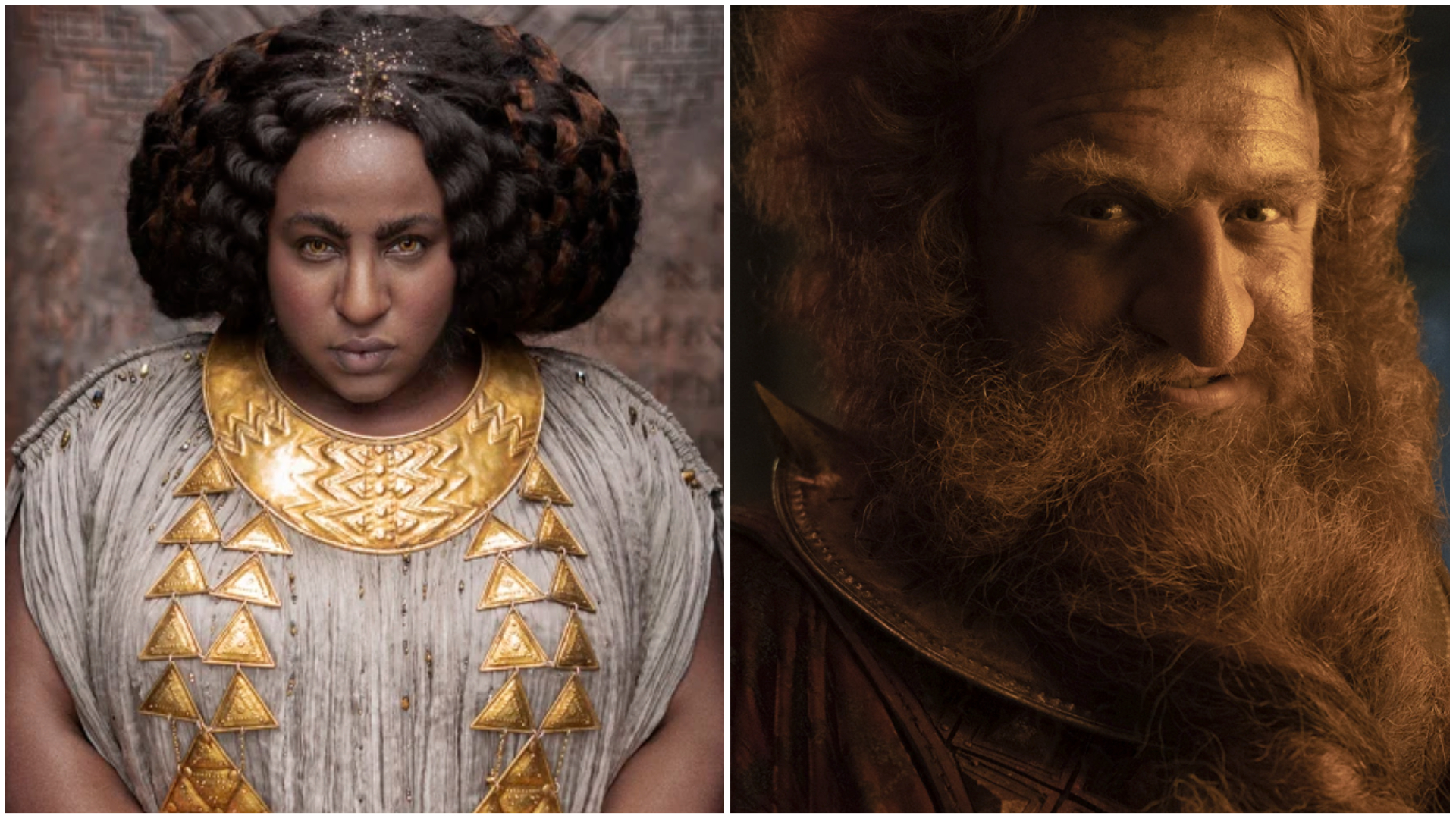
What’s the relationship like between your characters?
Arthur: There’s an antithesis to everything with a dwarf, a constant inner battle in them. There’s always a “yes... but”. There’s always a “but” with a dwarf. They love with passion – to the extreme. When they’re angry, they’re on fire. When they’re loving, it’s full of passion. And we see that with us. Nomvete: The brilliant thing with Disa and Durin is: united we stand. We are the prince and princess of Khazad-dûm. It’s so great to see the Dwarven kingdom in this time, in their prime, in the position of power.
How long did it take to get into costume and makeup every day?
Arthur: I’m going to jump in to say: three hours. Nomvete: I always go four hours, 20 minutes. Arthur: I don’t know where you get that extra hour from.
Nomvete: It could be my shower and meditation – and breakfast. I like a slow brekkie in the morning. Arthur: [laughs] OK. But in terms of actually being sat in the show, I was three. And with a lot of glue. It took about 50 minutes to put the nose on. The beard was in about 15 pieces. The beard can be plaited, or it can be loose, depending on if it’s an official visit – then I’ll wear it in my glory. But being a practical prince, and one of the lads, a dwarf of the Dwarves, it was tied up practically, and put through a ring, so that it doesn’t get in the way of climbing and smashing.
Sophia, your character is the first female dwarf we’ve seen on screen. Were there ever discussions about her being more masculine-looking?
Nomvete: There were all sorts of lengths discussed with the beard, and brilliantly we decided to go with this beautiful interpretation of facial hair for Disa. There was actually a first draft of her costume, which was much more heavier- set, a little bit more stony and rocky and heavier. A couple of the creative team had this wonderful idea of: ‘What if we celebrate Disa’s passion and sexuality, and how unapologetic she is about feeling, and loving, and being, and her body, and her strength?’ And for everything that I am, and everything that the world does and does not see filmically enough, I was so, so happy and proud and excited to be celebrated.
There are camera tricks to make you look smaller than the other actors. What was that trickery like?
Arthur: We experimented with every aspect, with every trick and skill that we could think of. Some of it was easy. Some of it worked. Some of it didn’t. And, yes, my eyeline was a tennis ball on many occasions. And it was just like: “Great, of course it is!”
Nomvete: I had some coloured tape in some fairly racy areas [for the eyeline]. I remember Rob [Aramayo] going, “I don’t think I need any tape for this one. I know where to look.” [laughs] The directors and crew were brilliant at honouring the fact that the best version for us is when we’re talking to the other actor. That wasn’t always possible. But we found that everyone was getting what they needed.
The Lord of the Rings: The Rings of Power streams on Prime Video from September 2. For much more from Total Film, make sure to subscribe to the magazine(opens in new tab) and never miss another world-exclusive feature.
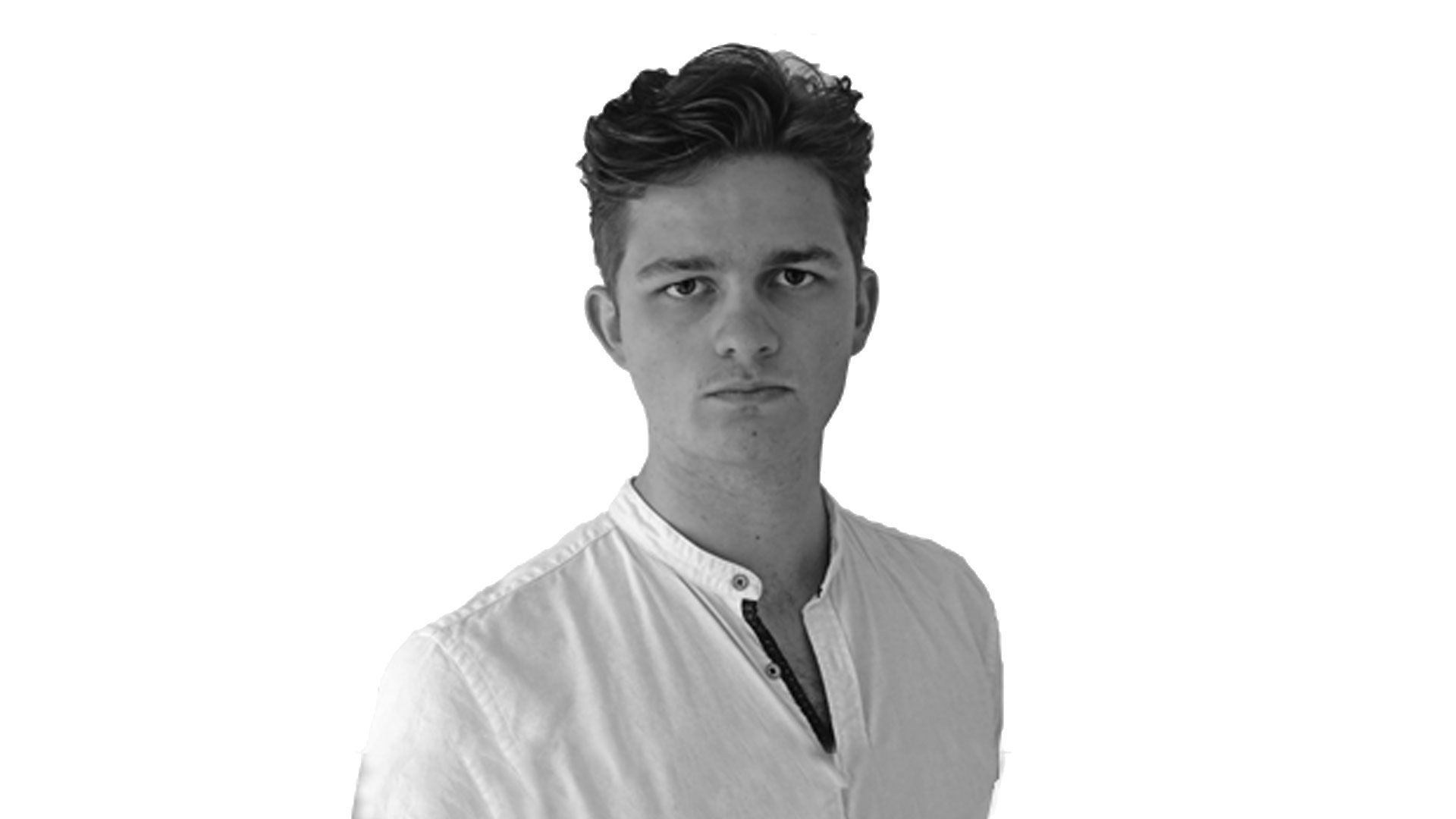
Jack Shepherd is the former Senior Entertainment Editor of GamesRadar. Jack used to work at The Independent as a general culture writer before specializing in TV and film for the likes of GR+, Total Film, SFX, and others. You can now find Jack working as a freelance journalist and editor.


